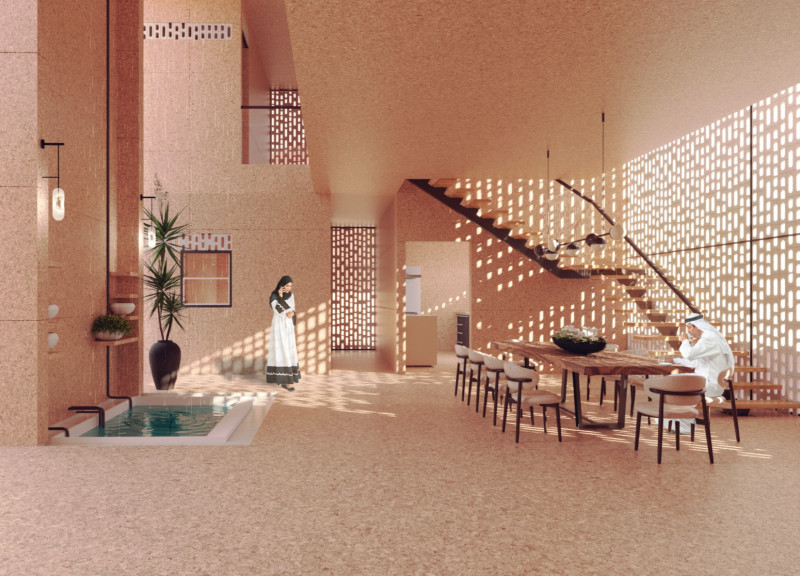5 key facts about this project
## Overview
The Rain-Towers of the Seven Emirates project is located in the arid context of the United Arab Emirates, addressing the critical issue of water scarcity through innovative architectural strategies. By integrating traditional elements, specifically the wind-tower (Barjeel), with contemporary technology, the design aims to enhance climate responsiveness and promote sustainable living. The project utilizes a U-shaped plan that fosters community interaction while allowing for potential future expansion.
## Sustainable Design and Water Collection
At the heart of the Rain-Tower initiative is a dual-purpose functionality that focuses on atmospheric water generation and improved thermal performance. Natural cooling mechanisms, such as wind towers, utilize prevailing winds to enhance ventilation throughout the interiors. Additionally, structures designed for rain harvesting capture atmospheric moisture, blending traditional practices with modern plumbing systems. This integrated approach not only meets practical needs but also aligns with the project’s sustainable ethos.
## Material Selection and Aesthetic Integration
The material palette has been carefully curated to respond to environmental conditions and aesthetic context. Lightweight, renewable cork is used for its excellent thermal insulation properties, while reinforced concrete provides structural integrity. Glass elements maximize natural light, and steel supports enhance durability. The choice of wood in flooring and beams establishes a connection with nature, promoting an indoor-outdoor relationship. Together, these materials create a cohesive aesthetic that reflects the local cultural heritage, with subtle textures and colors that offer warmth amidst the surrounding desert landscape. The design thoughtfully incorporates motifs characteristic of Islamic architecture, merging functionality with artistic expression.





















































